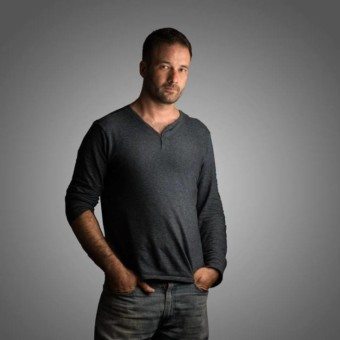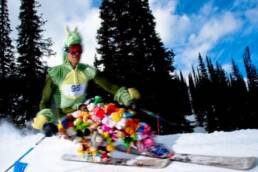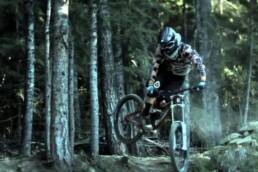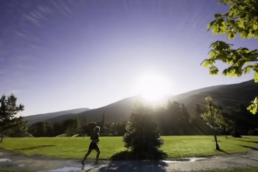Filmed recently during the peak of autumn, this time-lapse of Nelson, British Columbia, truly captures the magic of the Queen City in the heart of the West Kootenays. Here we interview creator Adrian Wagner about the behind-the-scenes work it took to make this stunning video.
Adrian Wagner studied photography in New York City from 1997 to 2001, capturing the diverse visual tapestry of the city and surrounding area. Since then, photography has been an integral part of his life. He’s now based in Nelson, British Columbia, where this video was shot. We caught up with him to find out how it was made.
Hey Adrian. What was the inspiration for this project?
I have loved the concept of time-lapse film since watching Koyaanisqatsi as a teen. I remember the profound impact that film had on my view of the world, on the concept of time, and of seeing civilization in a different frame. This project is just a short glimpse of time – imagine seeing the decay of the entire mountain ranges of millions of years, or the pulsing of glaciers or ice ages across the landscape over eons? Our human lives are such short moments in the scope of something larger. Sharing the beauty of place is one aspect, the other is that it gets me out there on the hills, taking it all in.
What equipment did you use?
I shot the film with a Phantom 3 Pro for the aerial shots, which were actually super slow flights sped up about 16-32 times. For the time-lapse work, I shoot video on a Nikon D610, which just gives stunning night-time performance. I shoot with a number of prime lenses from 300mm – 12mm fisheye.
Did you have permission to use the aerial drone?
Yes, we got permission from Transport Canada to fly the area above the water, over Pulpit Rock, and over Mountain Station. Huge credit to local film maker Bhodan Doval for helping make this happen. We also borrowed an aviation radio from the city of Nelson to monitor air traffic, and pretty much cleared out of the sky completely if any air traffic was in the area.
How long did the project take?
I filmed on a few nights and days over the course of a month. For time-lapse, there’s a lot of sitting and taking in the scenery. Many shots are about one hour of shooting for 20 seconds of footage, so it adds up. I have two DSLRs though so I can run two shots at a time, which helps. Having that fire at the top of morning mountain was heaven. Hot cider, whiskey, and a warm fire is an awesome way to spend an evening. I find most shots are cut short as I don’t bring enough warm layers.

You thank the Hume Hotel in your write-up. When did they come on board?
I had already gotten the majority of the footage. I was sitting in my studio talking to someone about getting the nerve up to ask the Hume to sponsor the film. Two minutes later I get an email from Ryan Martin about another project, and I was like, “Wow, lets try to make this happen.” I ran over and showed him the first 45 seconds of the film, and with a huge smile he was like, “Yeah let’s do this.” It’s a win-win. I get to make my art, connect it to the Hume brand, and getting that kind of exposure is hard to do with any other medium than film or viral photos. I’d like this to keep growing, to bring other businesses on board. If I can find a way to be an artist and create photos and films that benefit local businesses, then I’m just stoked!
What are some of your favourite places to shoot around Nelson?
A lot of my shots are limited by my time as a Dad – I don’t have the freedom of time I had when I was single and roaming free. I do shoot places like Gyro Park as they are easy to get to. I’d love to take my art further into the backcountry as the kids grow and time opens up. I love how iconic our waterfront is. I also like finding new locations and making the most out of repeating textures or architectural patterns.
What’s some advice you have for kids interested in getting into this type of work?
Get to know the limits of your gear, and push them. Even low-budget set-ups can take incredible footage these days. I takes pushing the envelop of what our gear and software is capable of. Invest in good glass. A cheap 50mm f1.8 lens can do wonders that no kit lens that comes with your camera can match. I love shooting Nikon as you can throw on any lens going back to 1959 because the mount hasn’t changed since then. For this shoot, I used a custom flat colour profile I found on the web, which allowed me to do lots of post-editing of colour. Shoot flat, and then bring the images to life in post production.
Related Stories
New Coldsmoke PowderFest Video
You want to know about ski style? Well dig into the cool uphill and downhill vibe at Nelson BC's Whitewater Resort as…
Kona Supreme Operator Video
So, I post this for a few reasons. It was made by a Nelson guy, Eric Crosland, who works for Kona Bicycles. And, of…
Garret Buehler Does Nelson Proud
Young gun Garret Buehler gets his shred on in this beauty action/lifestyle/love living and riding in the Kootenays…
Cool New Video by Nelson BC’s Best Western Hotel
The world of the webisode gets funner by the day. This new piece by the local Nelson family that runs the town's Best…
Dizzy Karts
This is classic Kootenay. Created by Nelson filmmaker Clay Mitchell, and first premiering at KMC's own Backyard Booty…
BKYRD
Super cool mini snowboard film shot in and around the Nelson, BC area. Nice job Michael Von Berrigan and friends. We…






